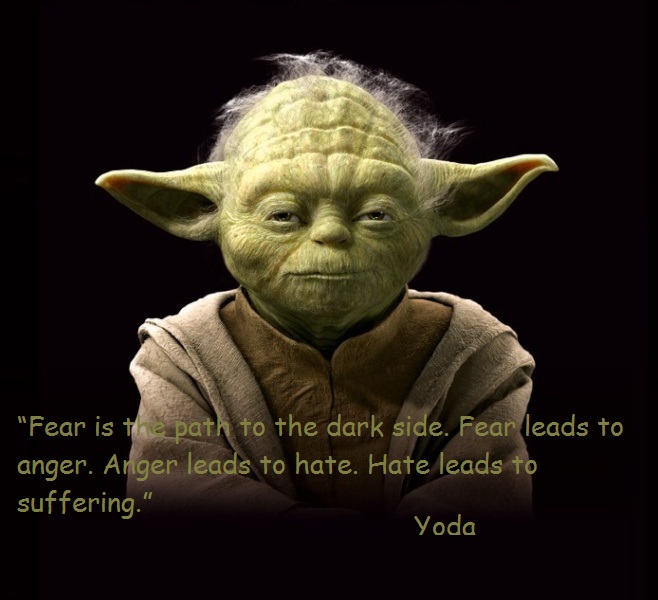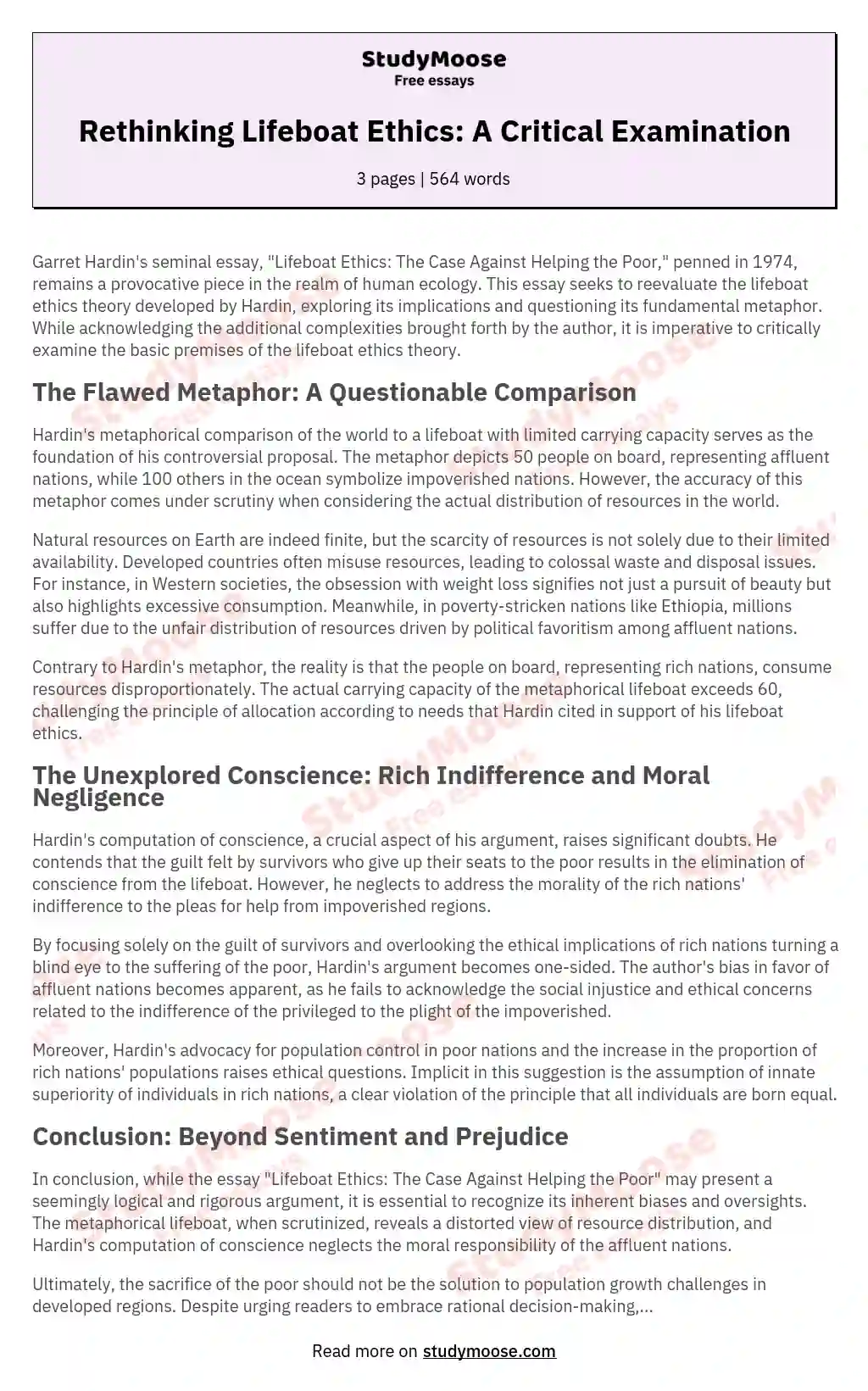Garrett Hardin's "Lifeboat Ethics: The Case Against Against Against Against Against Against Against Against against Helping the Poor" is a controversial and thought-provoking analysis of the ethical implications of helping those in need. At its core, Hardin's argument is that limited resources make it impossible to help everyone and that we should focus on helping ourselves and our own communities before attempting to help others.
Hardin begins by using the metaphor of a lifeboat to illustrate his point. Imagine, he says, that you are on a lifeboat with a limited number of resources, such as food and water. If you allow more people onto the lifeboat, you are taking resources away from those who are already there and potentially jeopardizing the survival of the entire group. Hardin argues that this same principle applies to the world as a whole. The planet, like a lifeboat, has limited resources and if we allow too many people onto it, we risk the survival of everyone.
To support his argument, Hardin cites a number of examples, including the overpopulation of India and China, the depletion of natural resources, and the strain on the environment caused by increasing numbers of people. He also points out that aid to developing countries often has unintended consequences, such as contributing to population growth and promoting dependency on foreign aid.
Hardin's argument is provocative and raises important questions about the ethical implications of helping those in need. However, it has also been widely criticized for being overly simplistic and lacking in empathy. Many argue that it ignores the complex social and economic factors that contribute to poverty and fails to acknowledge the inherent value of every human life.
One major critique of Hardin's argument is that it ignores the fact that wealth and resources are not distributed evenly throughout the world. While it may be true that the planet has limited resources, it is also true that some countries and individuals have far more resources than others. To argue that we should not help the poor because doing so would jeopardize the survival of those who are already well-off ignores the fact that the poor are often struggling to survive in the first place.
Another critique of Hardin's argument is that it fails to take into account the potential benefits of helping others. While it is true that aid can have unintended consequences, it can also have positive impacts, such as improving living conditions, increasing access to education, and reducing the spread of disease. By focusing solely on the potential risks of helping others, Hardin's argument ignores the potential rewards.
In conclusion, Hardin's "Lifeboat Ethics" raises important questions about the ethical implications of helping those in need. While his argument is thought-provoking and has some validity, it is also overly simplistic and lacks empathy. It is important to consider the complex social and economic factors that contribute to poverty and to recognize the inherent value of every human life. Ultimately, it is up to individuals and societies to decide how best to balance the need to help others with the need to preserve our own resources and ensure the survival of all.
Biodegradable and non-biodegradable materials are two types of substances that have significant impacts on the environment. Biodegradable materials are those that can be broken down, decomposed, and returned to the environment through natural processes. Non-biodegradable materials, on the other hand, do not break down and remain in the environment indefinitely. In this essay, we will explore the differences between biodegradable and non-biodegradable materials and their effects on the environment.
Biodegradable materials are organic substances that can be decomposed by microorganisms, such as bacteria and fungi. Examples of biodegradable materials include food waste, paper, and wood. These materials are an important part of the natural cycle of life as they are broken down and returned to the soil, providing nutrients for plants to grow.
On the other hand, non-biodegradable materials are synthetic substances that do not break down and remain in the environment indefinitely. Examples of non-biodegradable materials include plastic, metal, and glass. These materials do not provide any nutrients to the soil and can remain in the environment for hundreds of years.
The main difference between biodegradable and non-biodegradable materials is their impact on the environment. Biodegradable materials are a natural and sustainable part of the environment, while non-biodegradable materials can have negative impacts on the environment. For example, plastic is a common non-biodegradable material that has become a major environmental problem. Plastic waste can litter the land, water, and air, harming wildlife and polluting the environment. It can also take hundreds of years to break down, leading to long-term pollution.
In contrast, biodegradable materials can be a more sustainable and environmentally friendly choice. They can be composted and turned into nutrient-rich soil, helping to reduce waste and benefit the environment.
Overall, biodegradable and non-biodegradable materials have significant differences and impacts on the environment. While biodegradable materials can be a sustainable and natural part of the environment, non-biodegradable materials can have negative impacts on the environment and should be used with caution.







